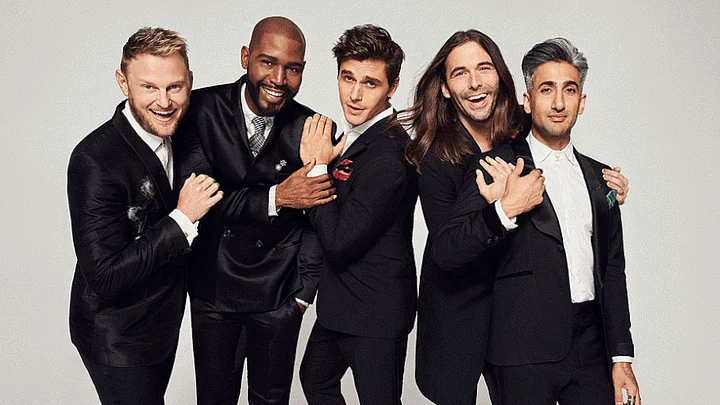“Just because you make an effort with your wardrobe, doesn’t make you a wuss! You making an effort with your wardrobe means you’re serious about the life you want.”
In a scene from the first season of Netflix’s popular reboot Queer Eye, fashion guru Tan France taps into what women have been itching to tell heterosexual men for decades.
It’s not only the truth bomb the wildly popular Netflix show drops on its unsuspecting viewers. From tips on self-care to normalising crying for men, Queer Eye is a lesson on non-toxic masculinity wrapped up in an enjoyable makeover show helmed by five gay men. And with its second season out on 15 June, just like the show’s catchy theme song, things just keep getting better.
Originally titled Queer Eye for the Straight Man, the show first aired in 2003 with a simple premise: five gay men — called the ‘Fab Five’ — would makeover a clueless man based on their expertise in grooming, fashion, culture, food and interior design. It was a show aimed at changing attitudes of American people on homosexuality when representation of queer personalities on TV was rare.
Too long? Listen to the story here:
It’s spiffy Netflix reboot is suitably altered to reflect 2018 sensibilities. The new ‘Fab Five’ — Karamo Brown (‘culture’), Tan France (‘fashion’), Bobby Berk (‘design’), Antoni Porowski (‘food and wine’) and Jonathan van Ness (‘grooming’) travel to the conservative town of Atlanta in Georgia in a world where red MAGA caps are as commonplace as discrimination against LGBTQ+ communities.
The men they meet may vary in how big their house is and how messy their life is, but they echo a type of man you’ve definitely seen before — skulking in the shadows, stuck in a funk, unwilling to change and often sporting a long, scraggly beard. (Unkempt beards are not sexy, as Jonathan Van Ness, groomer-extraordinaire & a large ball of sunshine, reminds us many times.)

Like Neal Reddy from the first season of the show, a Yeti-like figure who was resistant to any change and anxiously wary of hugs at the beginning of the week. But at the end, his clothes & his swanky house (thanks to the interior expert, Bobby Berk!) weren’t the only thing that were new. As he strutted around hosting a dinner party, a new confidence radiated from him — the makeover wasn’t just external.
Similarly, in a standout episode in season two, the ‘Fab 5’ help Tammye Hicks, their first hero. Living in the town of Gay, Georgia, Tammye is a community leader, a church volunteer and a breast cancer survivor.
Her Christian faith is central to her life, but it’s also the same faith which has cruelly excluded many of the ‘Fab 5,’ especially Bobby Berk who grew up devoutly Christian but was boycotted by his family and friends after he came out as gay.
In an India where homosexuality is still a crime, the episode strikes a bitter and tearful chord. If a devout Christian community leader can accept and love her openly gay son and five gay strangers, surely there’s hope in fighting for change in India too?
This underpinning of hope is what differentiates Queer Eye from other makeover shows. While every other show will tell you to pick colour when dressing, very few will tell you that ‘failure is a part of success’ (Can Karamo be our life coach too?) You’ll get grooming tips off any other lifestyle website, but few shows emphasise how it’s okay for men to cry their hearts out.

The social media chatter about Queer Eye is almost messianic; with viewers all over the world describing the show as a warm hug from a well-meaning friend or a cathartic session of therapy.

But what makes the show so special and unique? For one, its unflinching look at American politics and its troubled history with accepting homosexuals as a part of a society. Its universal appeal lies in something deeper — the feeling of reassurance that someone is rooting for you to be the best version of you.
(At The Quint, we question everything. Play an active role in shaping our journalism by becoming a member today.)
